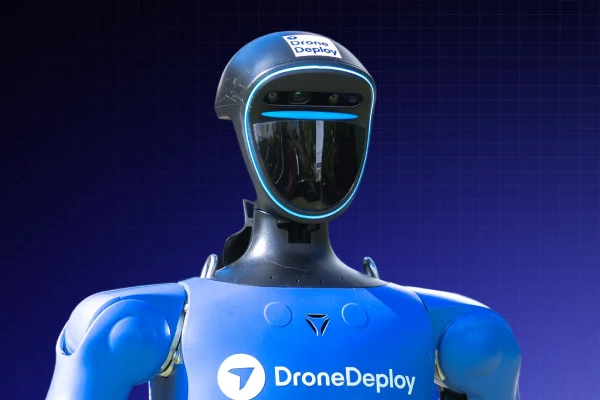How Drone Technology and Automation Help Create Jobs

Quick Summary
Automation has had a long, storied history in our global workforce. Its implementations have ranged from the printing press to the car production assembly line to the ATM – to name just a few. But automation has also instilled fear in many workers across a variety of industries. For decades, if not centuries, automation has been the boogeyman lurking around the corner, ready to steal jobs from the workforce. But what we must understand is that one of the primary purposes of automation is to automate a workforce’s monotonous and mundane tasks. One of its essential benefits is not to replace jobs but actually create them.

The functions and goals of automation are incredibly nuanced, and the narrative of “job-stealing robots” is a much trendier topic than “how automation has – and will – create jobs.” According to a 2018 World Economic Forum study, between 2018 and 2022, more than 75 million jobs could be lost as companies shift toward more automation. But this estimation comes with an upside: 133 million new jobs will emerge during that same period. Additionally, a Deloitte study found that automation technologies eliminated 800,000 low-skilled jobs, but, in turn, created 3.5 million new jobs. Those new jobs: they paid an average of $13,000 more per year than the ones that were lost.
If industries adopt automation best practices and embrace new technologies to advance their operations, history has shown these practices enable them to grow, achieve financial vibrancy, and, yes, create more job opportunities in the process.

In 1913, the Ford Motor Company introduced a car production assembly line – still considered to be one of the most influential pioneers in automation. The assembly line cut the time it took to build a car from 12 hours to 90 minutes. The time saved improved Ford’s production rates as well as increased its profits.
In 1914, rather than replace workers because of automation, Ford looked to improve labor productivity further. The company introduced the $5 daily wage for an 8-hour day, replacing the previous $2.34 for a 9-hour day. Because of this influx in profits, Ford increased production considerably, opening more assembly lines across the United States (and, eventually, globally). The surge in production plants meant Ford had to hire more workers to produce more cars.
Yes, the Ford assembly line replaced the tasks of hundreds of workers – cutting production from 12 hours to 90 minutes will do that – but some of those workers were then freed up to perform more essential jobs, ultimately increasing Ford’s overall output – not to mention profits.

The same can be said about the introduction of the ATM. Many bank tellers feared they would lose their jobs as more ATMs popped up around the country. Like Ford, though, with the influx of ATMs, banks were able to open up more branches and hire more employees to staff those banks because of this new form of automation.
In the short term (and on paper), automation can seem like a bully to the workforce: new forms of technology are looking to replace American jobs and severely spike the unemployment rate. But history has proven these fears aren’t necessarily warranted. “The dire predictions that robots are going to take our jobs are overstated,” says Susan Lund, McKinsey Global Institute’s director of research. “There will be enough jobs for everyone in most sectors.”

This is not to say there won’t be challenges along the way. The same report from the World Economic Forum verifies that a critical challenge for grappling with the future of work will be outfitting staff with new skills. Workers unwilling, or unable, to learn new skills will consequently become redundant. Redundancies in the workforce is an unfortunate inevitability, but by teaching workers new skills, there is a potential reduction in its impact. The report went on to specify, “To prevent an undesirable lose-lose scenario – technological change accompanied by talent shortages, mass unemployment, and growing inequality – it is critical that businesses take an active role in supporting their existing workforces through reskilling and upskilling.” For a company to not only survive but thrive, it must foster in new workplace flexibilities and train its staff on new crafts and best practices.

COVID-19 has further accelerated the adoption of automation across many industries. In a report published by Forbes analyst partner, Forrester, many companies are investing more in automation than in rehiring in the wake of the coronavirus pandemic. This corroborates an earlier report that claimed many businesses were planning to accelerate their automation strategies even before the pandemic. NBC News also reported businesses are adopting new technologies as they reopen during the pandemic. These include Bluetooth sensors to enforce social distancing between employees, robots that help with anything from packing & fulfillment to cleaning, and QR codes that reduce contact on physical paper and menus. And, according to Nan Craig, a London-based researcher of work with the Centre for Global Studies, other types of work will inevitably replace those lost jobs.
In the wake of the pandemic, drone technology has proved invaluable for companies, repeatedly referred to as the “perfect socially distant worker.” It has allowed agriculture companies to reduce the number of agronomists they put into fields while providing them more significant insights into their crops. Drone data has helped construction companies easily track their assets and monitor site progress if they had to shut down operations because of the shelter-in-place. Drones have enabled energy companies to perform faster inspections and keep workers out of harm’s way on a job site. And for the utility industry specifically, a Capgemini report found automation offers the potential to save between $237 billion and $813 billion globally over the next three years. Drone technology grants companies the ability to automate their practices, which has been incredibly beneficial for the ever-evolving new work arrangements.
Companies are increasingly leaning in to new technologies and automation as a way to improve their operations. Those technologies are here, they exist, and they’re ready to be embraced – and the time is now to embrace them. Automation is an uneasy topic for many companies, workers, and industries, but it shouldn’t scare them, it should empower them.
If you're interested in learning more about drones' role in automation, download our State of the Drone Market 2020 Report.
FAQ
Related articles
Ready to manage your data from the very start?
Book a quick call to see how DroneDeploy streamlines capture from construction through building ROI.
.svg)
.png)


